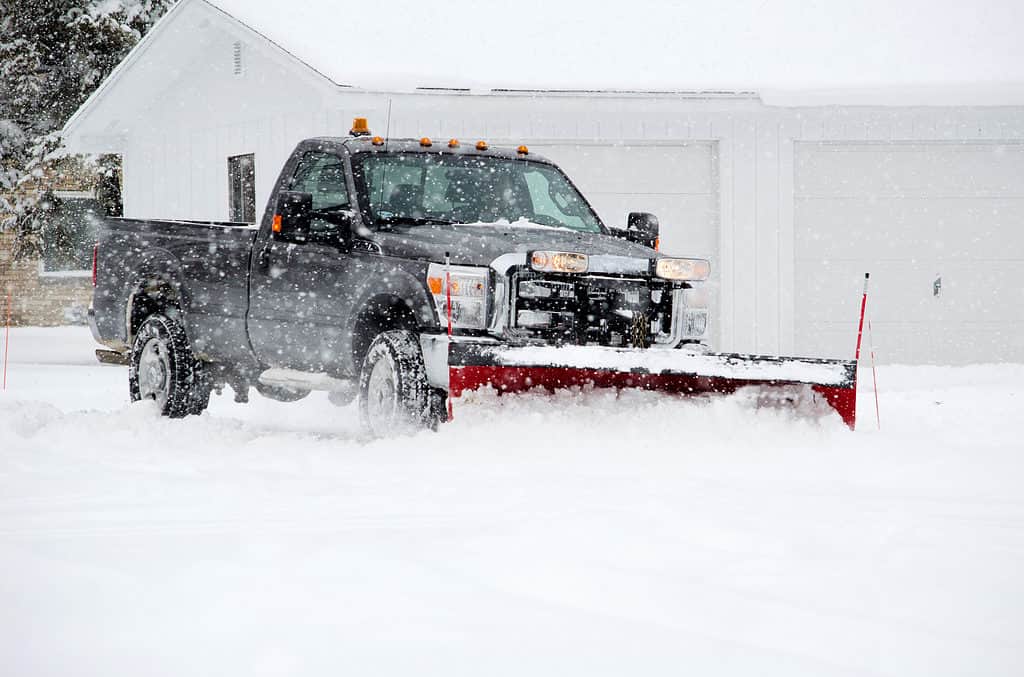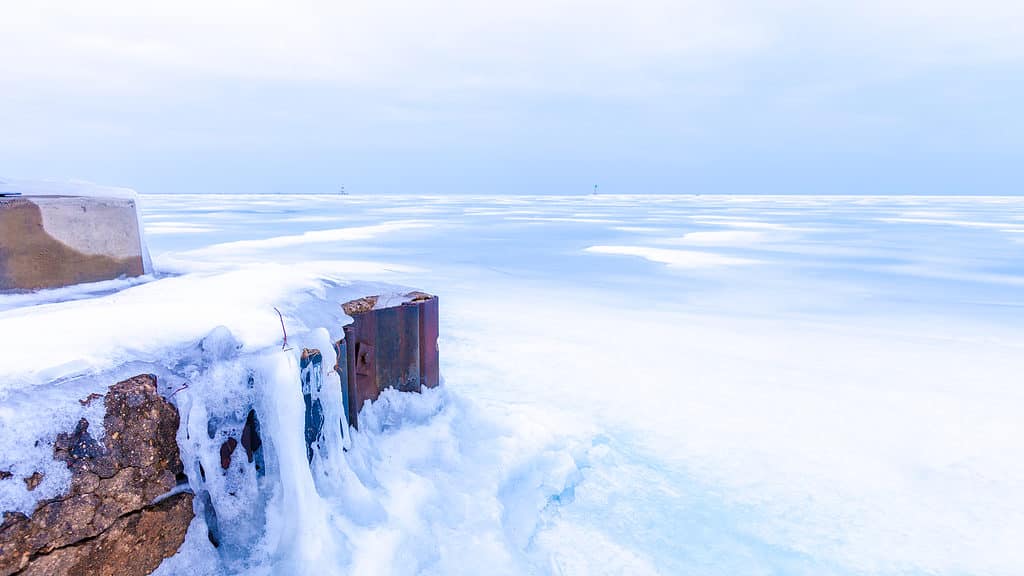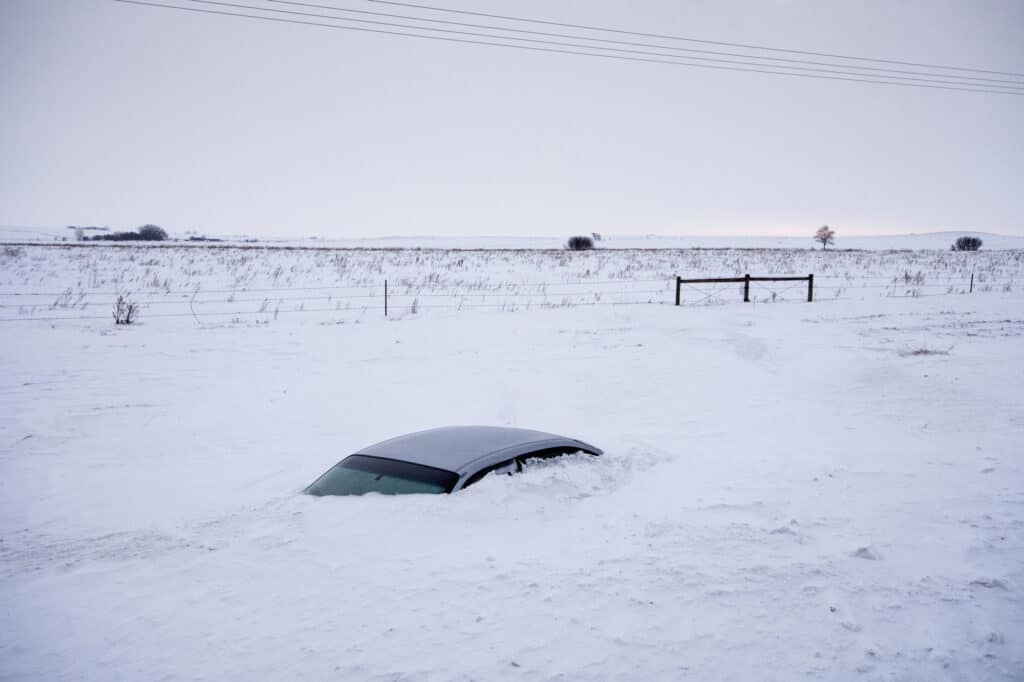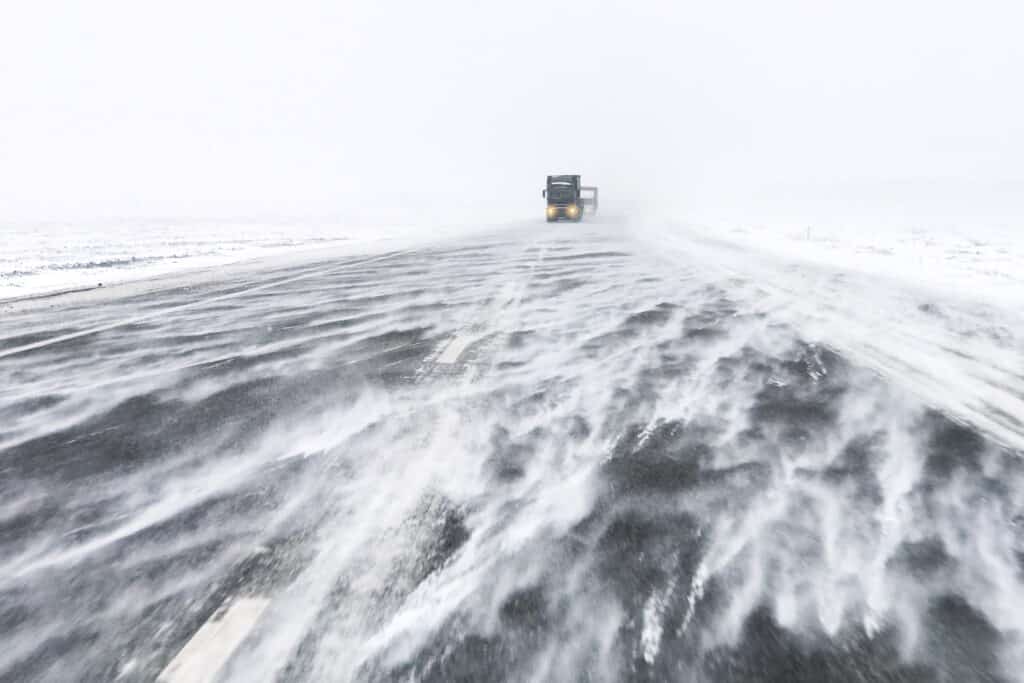Michigan is known for having extreme weather conditions. The continental humidity ensures that summers in Michigan are warmer than usual. Conversely, winters are snowy and freezing due to winds from the Great Lakes. Michigan is one of the snowiest regions in the United States. So it is not unusual that it has had its fair share of blizzards. The biggest blizzard in Michigan happened in 1978.
While blizzards don’t have the notorious reputation of other destructive weather events like tsunamis and hurricanes, they still wreak some havoc on any region by coating roads with ice and making them slippery and dangerous. The plummeting temperatures and chilly storms also halt day-to-day life. Michigan residents have repeatedly experienced dangerous blizzards, but the great blizzard of 1978 is still the biggest so far. It will be remembered as one of the worst blizzards to ever hit Michigan.

©Susan B. Sheldon/Shutterstock.com
Blizzard Extremes in Michigan
Michigan is no stranger to extreme blizzard events. Although the great blizzard of 1978 is often ranked as the biggest blizzard in Michigan, there have been several other noteworthy crazy winter weather in the state.
One of them was the blizzard of 1967. On January 26 and 27, 1967, Michigan was overrun by large drifts of snow and extreme freezing temperatures. This had been preceded by unseasonably warm temperatures for a typical winter month like January.
Residents were shocked when the blizzard arrived, with snowfall reaching as high as 20 to 24 inches in areas like Lansing. Kalamazoo and Battle Creek also witnessed snowfall as high as 30 inches and 28.6 inches, respectively. The death toll from this blizzard was about 22. Ironically, most people did not die from the biting winds but mostly from heart attacks that occurred as they tried to push stuck vehicles and shovel huge amounts of snow. The 1967 blizzard also established some impressive weather records in Chicago, which was also severely affected by the storm.
In 1999, Michigan was also affected by the North American blizzard of 1999, which took place between January 2 and 4. The snowstorm was brief, but it still resulted in 78 fatalities, closures, and travel delays and dumped 10 inches of snow in Michigan. It also spread across cities like Ohio, Quebec, and Kentucky.

©Moab Republic/Shutterstock.com
The Great Blizzard of 1978 — The Biggest Blizzard in Michigan
While the events cited above were among the most devastating blizzards in Michigan, the great blizzard of 1978 is arguably the biggest of them. The severe snowstorm started as rainfall on January 25. The day had started like any other in Michigan, with calm winds, cloudy skies, and the usual cold January temperatures. By late evening, rain began to fall, but the deepening of the arctic air quickly transformed it into a snowfall during the predawn hours of the next day. Across the Great Lakes, blizzard warnings were issued by the late evening of January 25.
During the daytime on January 26, visibility was impaired significantly, and the temperature plummeted to zero. This was accompanied by severe whiteouts. By evening, most roads were already impassable. The National Weather Service would later categorize it as a rare and severe storm of unprecedented magnitude.
Muskegon, Michigan, was one of the hardest hit. The city was awash with about 52 inches of snow over the four days of the blizzard. The wind raced at a shocking speed of 100 miles per hour, raising drifts that practically buried some homes.
Other states also hit by the blizzard include Illinois, Ohio (where 51 of the 70 deaths occurred), Indiana, Kentucky, and Western Wisconsin. Chilly winds were measured at minus 60 degrees in some states. Preceding the storm was a rare alliance of upper-level waves in Texas and the Northern Plains. The merger between the waves caused a surface low pressure that moved north from the Gulf Coast to Kentucky, Ohio, and Michigan.

©Photo Image/Shutterstock.com
Effects of the Biggest Blizzard in Michigan
The Michigan police declared that Traverse City was closed, and William Milliken, who was governor at the time, had to declare a state of emergency in Michigan. Residents were warned not to venture out of their homes. The radio staff of WTCM (a major radio station in Traverse City) faced issues getting to work due to the impassable roads. The front door of the radio station was also covered in one foot of snow when the staffers managed to get there.
According to C.R. Snider, a meteorologist working in Michigan, the storm’s impact was devastating. Snider referred to the blizzard as one of the most extensive and damaging blizzards in Michigan’s history. Twenty people died either due to heart attacks or traffic accidents. Several other people were hospitalized due to exposure to the unforgiving cold when their homes lost power and heat.
In Snider’s report, the meteorologist detailed how the blizzard made roads so impassable, many shift workers could not be relieved and had to stay at work for several more hours than anticipated.
In Southeastern Michigan, thousands of cars were abandoned on highways. Many cars and trucks were rendered useless because they were buried beneath mounds of snow. Due to the combination of extremely low temperatures, large gusts of wind, and vast amounts of snow, classes were canceled in several schools, including Western Michigan University.
Kalamazoo witnessed more than two feet of snow and winds that blazed through the region at 60 miles per hour. The strength of the winds tore off the roofs of several local businesses. Massive snow drifts were as deep as 17 feet in some Michigan areas, bringing some regions to a standstill.
Aftermath of the Biggest Blizzard To Hit Michigan
Walking in the snow was practically impossible, and those who attempted it had to venture out with cross-country skis. News coverage was impossible, and publications missed about three days of coverage. This meant residents locked in their homes did not know what was happening outside.
It was not until Saturday morning when there were glimpses of the sun, that most people started to believe that the storm had passed. People were still urged to stay in their homes for a couple of days so the snow removal process could take off. For several weeks the snow was still being dug out in several regions in Michigan and Ohio. Eventually, the Ohio national guard had to intervene in clearing out the blizzard.
The Great Blizzard of 1978 is, to date, one of the most severe and worst weather events in Michigan and US history. Its severity is still a common reference point for other blizzards to date. Overall, there were 70 deaths, with about 20 of them being in Michigan. The total damage caused by the storm was estimated at 100 million dollars.
As the storm passed over Michigan, the third lowest non-tropical atmospheric pressure was recorded in the Mainland United States. Its unprecedented wreckage in Ohio, with 50 deaths and 100 million dollars in damages, earned it the name: “storm of the century.” The blizzard still generates a high level of interest in meteorological research.

Conclusion
The great blizzard of 1978 took place more than 40 years ago. It is still remembered by many residents and meteorologists. It is one of the classic examples of nature’s wrath and the damage it can cause. While we can get better at forecasting events like this, it’s practically impossible to stop or redirect them.
Up Next
- Discover the Biggest Blizzard to Ever Hit California
- How do Blizzards Form, and Why are They so Dangerous?
- Discover the Biggest Blizzard to Ever Hit Ohio
The post Discover the Biggest Blizzard to Ever Hit Michigan appeared first on AZ Animals.
from Animal News, Facts, Rankings, and More! - AZ Animals https://ift.tt/DgQefHK